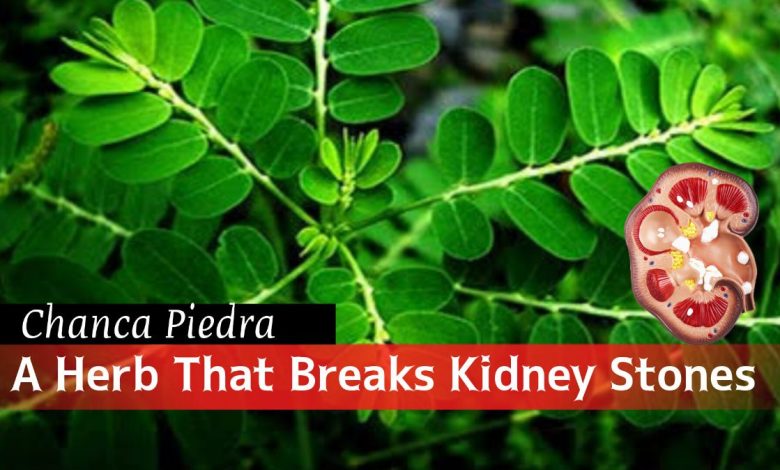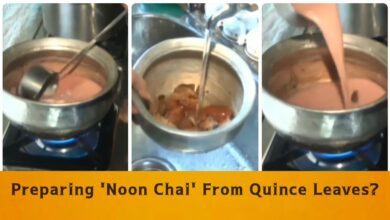Does Chanca Piedra really work for breaking kidney stones?

DR. MIKE NGUYEN
If you’re passing a kidney stone, you’ve probably searched online for what you can take to help pass or dissolve it. It wouldn’t take long for you to find glowing testimonials for the natural herb “Chanca Piedra”. But does it really work?
In this post we’ll review the available scientific research to try to get an answer.
What is it? The scientific name for Chanca Piedra is Phylllanthus niruri. It’s an herb which has been used in traditional medicine for over 2000 years. When used as a natural remedy for kidney stones it goes by the popular name of “stone breaker”.
It isn’t just for stones. It’s also purported to have anti-infection, anticancer, anti-inflammatory, anti-diabetic, and liver protective effects.
How is it taken? It’s widely available on the internet and from herbal stores as a capsule, tincture, dried leaf, root, or whole plant.
How might it work? Chemical compounds including lignans, alkaloids, and flavonoids in Chanca Piedra are thought to reduce the release of stone forming constituents in the urine and inhibit stone crystal formation. It may also cause smooth muscle relaxation in the ureter, easing stone passage.
What does the research show? While individual testimonials of how well a treatment works are important, they can’t always give us an accurate answer. Depending on the location and size of a kidney stone, 50-80% will pass spontaneously – with no treatment. Therefore, if you are passing a kidney stone you are inherently likely to have a successful stone passage regardless of what else you do.
Anything you take may seem like an effective treatment even if it didn’t make an actual difference. To find out whether a treatment is truly effective, research needs to be performed to determine how a potential treatment works in the lab and in actual patients. We’ll next review what research has been done on Chanca Piedra.
Two laboratory studies of Chanca Piedra have been published. In one study, rats with implanted stones in their bladder who were fed a liquid extract of the herb appeared to have slower stone growth. A small minority of the treated rats (three of twenty-two) actually passed or dissolved their stone. No urinary differences in concentrations of typical stone forming substances (including calcium, oxalate, citrate, and uric acid) were seen.
In Chanca Piedra study a liquid extract of Chanca Piedra was added to urine from rats and humans that had been seeded with calcium oxalate to induce stones.
Stone crystals formation was not inhibited by the extract and in fact more crystals actually formed in the treated urine. However, the crystals that did form seemed to be smaller. Collectively these two small laboratory studies suggested that the herb may have a partial effect on how stone crystals form and it may do so in a way that does not change the typical measures of urinary chemistry that are seen in stone formers.
Three clinical studies of Chanca Piedra have been completed involving kidney stone patients. In two of the studies the herb was given as a capsule or infusion tea to stone formers. Urine and blood samples were tested before and after treatment for concentrations of expected stone affecting substances such as calcium, oxalate, citrate, or uric acid. In both studies, no overall differences were detected in blood or urine. Only when the researchers looked at a smaller subset of patients were they able to detect a benefit.
These subsets were not consistent between the two studies making this a less convincing finding (patients with high urinary oxalate and uric acid in one study and patients with high urinary calcium in the other study).
In the third clinical study, kidney stone patients who underwent extracorporeal shockwave lithotripsy treatment were given either Chanca Piedra in capsule form or no treatment (a control group). Stone clearance on x-ray and ultrasound was then compared. No overall differences were noted in stone clearance between those given or not given Chanca Piedra. Echoing the situation for the two studies above, only when the researchers looked at a smaller subset of patients (in this case those patients with stones in the lower part of the kidney) were they able to demonstrate a benefit. Taken together, these three studies aren’t enough to demonstrate that Chanca Piedra significantly changes urine in a way to dissolve or more easily pass stones. In all three studies the researchers had to resort to subgroup analysis to find a difference. When researchers have to “stretch” statistically like this, they are more likely to introduce random chance leading to erroneous results.
The take away: Chanca Piedra is a commonly used natural remedy to encourage kidney stone passage and reduce future stone growth. Laboratory research suggests it may affect stone crystal formation, leading to reduced stone growth and facilitating stone passage.
Clinical research in stone patients is limited and inconclusive on whether it is beneficial in stone prevention or in improving passage. Further study will be needed to demonstrate with more reliability the potential benefits of this treatment. Until more research is available, it’s not possible to conclude one way or the other whether Chanca Piedra is an effective stone treatment. It is however not likely to cause harm. Patients interested in this treatment should discuss this option with their treating medical provider but should also follow a traditional treatment plan.
ABOUT DR. MIKE NGUYEN
Mike M Nguyen, MD, MPH, is a urologist and an Associate Professor of Clinical Urology at the Keck School of Medicine of USC in Los Angeles, CA. He specializes in the treatment of kidney stones with both surgery and dietary prevention and the in the treatment of kidney and prostate cancer using the latest robotic surgical approaches.




